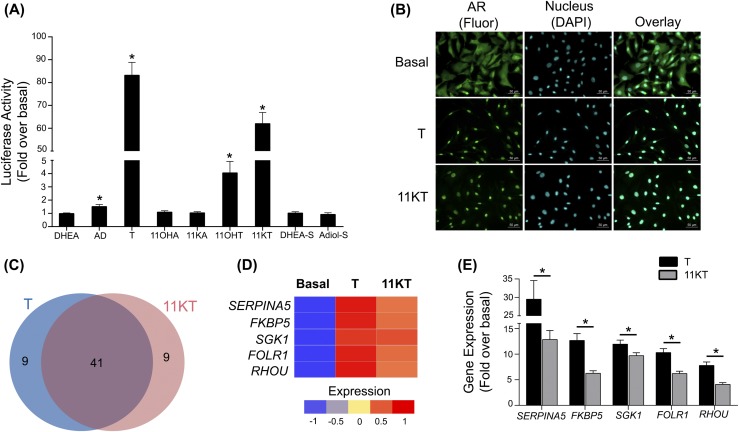Figure 2.
Androgen studies using the CV1-ARLuc cell line. (A) Gaussia reporter gene regulation in response to unconjugated and sulfated C19 steroids. The data represent the mean ± SEM of three independent experiments, each performed in triplicate. *P < 0.05 vs basal. Basal denotes treatment with 0.1% methanol (vehicle). (B) T and 11KT binding causes AR nuclear translocation. Fluorescence microscopy of CV1-ARLuc cells stably transfected with a human AR and treated with or without 100 nM of T and 11KT, respectively, for 18 hours. Green fluorescence represents AR immunoreactivity, and blue fluorescence is DAPI (nucleus). (C) The 50 most highly upregulated genes in CV1-ARLuc cells after treatment with 100 nM of T and 11KT as identified by RNA-Seq. Both T and 11KT stimulated 41 of these 50 genes. (D) RNA-Seq and (E) quantitative RT-PCR validation of the expression of CV1-ARLuc genes stimulated by treatment with T and 11KT. These genes were previously shown to be androgen responsive. The data represent the mean ± SEM of three independent experiments, each performed in triplicate. *P < 0.05, T vs 11KT. AD, androstenedione; DAPI, 4′,6-diamidino-2-phenylindole.

